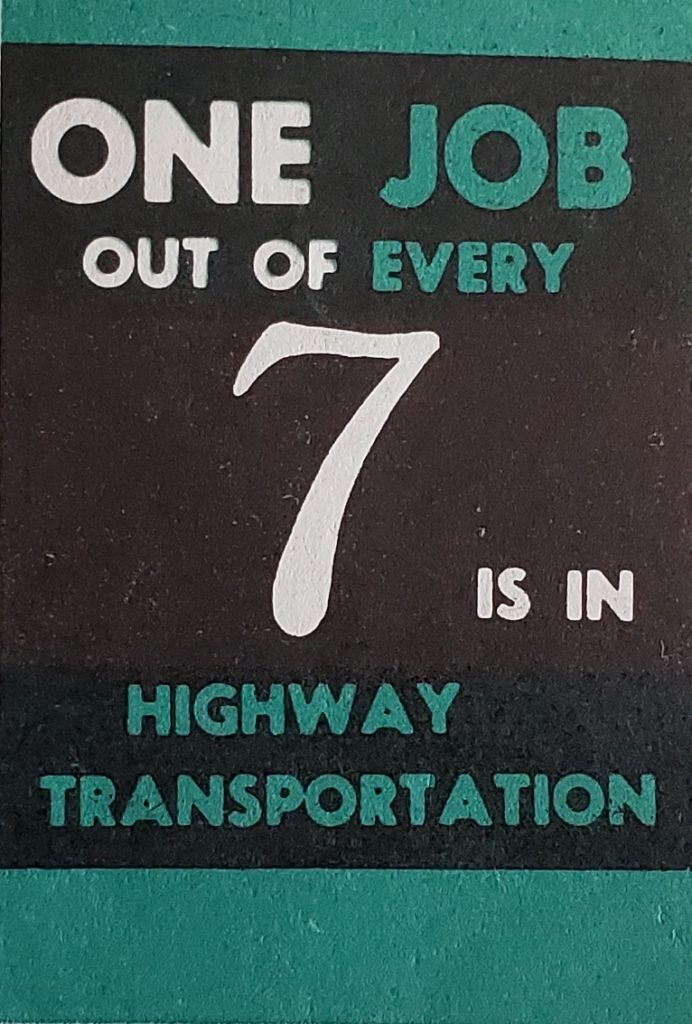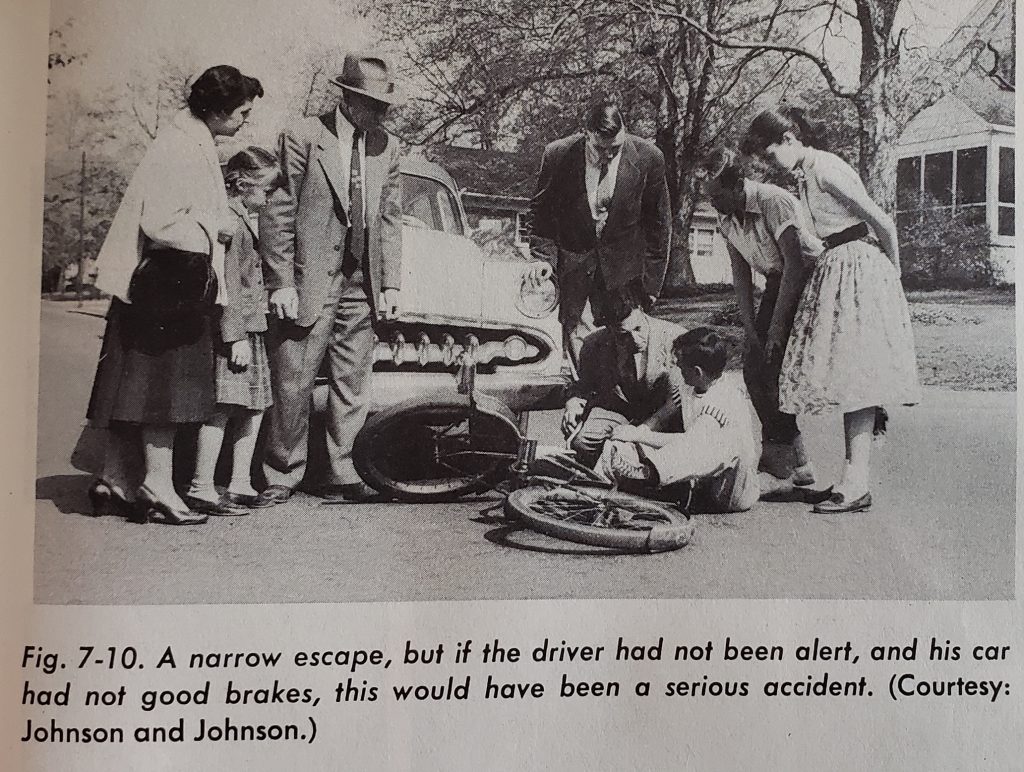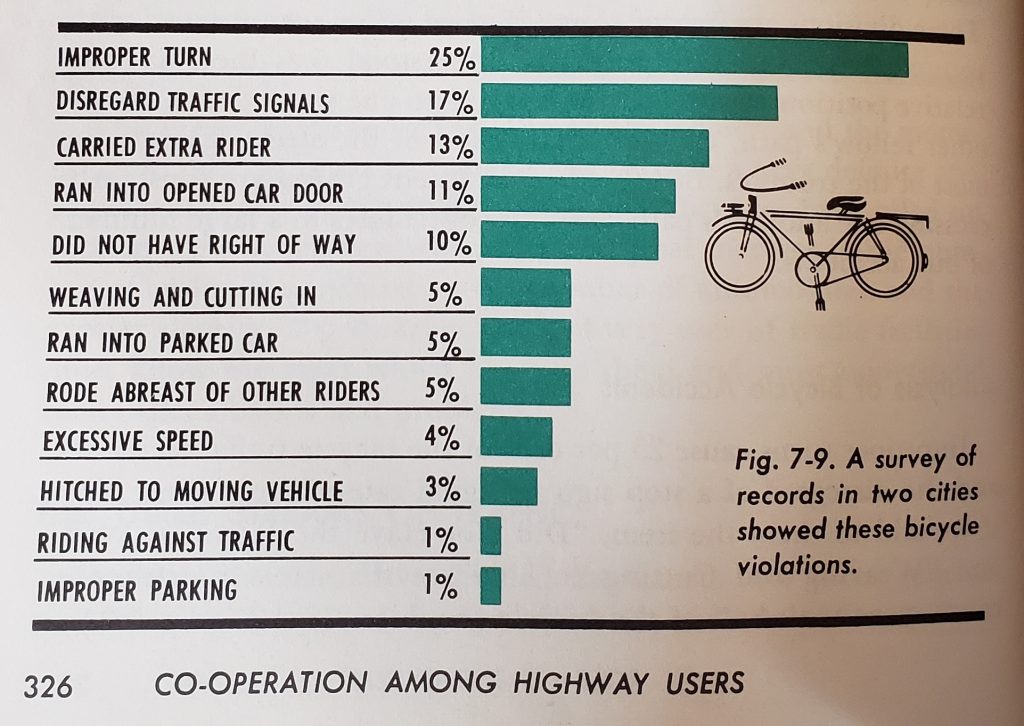Man and the Motor Car: A Historical Glance
I took a virtual road trip with Man and the Motor Car, a spectacularly awful volume published in 1959 by the Center for Safety Education at New York University. The book was originally published in 1936 as a sort of primer on driver’s ed. It starts out with some interesting enough history and some technical background that might have been useful to drivers of the far simpler, though far less reliable, cars of yesteryear. These days, for better or worse, it’s possible to own a vehicle without ever having to open the hood, so it’s interesting to see how this literature attempted to imbue some understanding– and appreciation- of the machinery within. Beyond that, the book is unsurprisingly uncritical of the advent of the age of the Motor Car.
Cars are presented as some sort of, I don’t know, mechanical mana from heaven? Henry Ford descended from the ether and built a motor wagon in his shed on Bagley Street, and thence was borne a new age of progress for the yeoman driver! Trucking opens up new opportunities and markets! Horse-drawn carriages were uncomfortable! Buses allow the movement of a lot of people! Oh, and what the hell is a “train”? (The book doesn’t mention trains).
But What Was The Cyclist Wearing?
Some things change, and some things do not. One section on the need to safely share the road with cyclists echoes Angie Schmitt’s 2020 book, which I reviewed a couple of weeks back. There is this sort of vague language in the passive voice used to describe fault in bicycle accidents. There are seven categories of things that drivers do wrong. Neglecting to use hand signals is the first one listed. Recall that cars in these days did not have turn signals. (This tracks with Michigan drivers who seem to think the year is still 1959). The text says that 25% of accidents caused by cyclists were from “improper turns.” It is unclear what this means. Statistics are not listed for the motorist-caused accidents.
Pedestrian safety
So, too, is the plight of the pedestrian minimized. The chapter begins by acknowledging the pedestrian’s fundamental disadvantage:
Today’s walker is the “underdog” so far as the automobile is concerned– an automobile far outrates him in weight, momentum, striking power, hardness of material, and size.
But it then goes on to point out that 2/3 of all traffic fatalities in cities are pedestrians. The book also says that while around 25% of car accidents involve an injury, nearly all pedestrian accidents result in injuries. Lethal shit, bro. But you know whose fault it is? It’s the fault of pedestrians who “have never driven a car. Either very young or very old, they have not yet adapted themselves to the speed of automobiles and do not understand the problems faced by the driver.” (p. 315) Unsurprisingly, the statistics the authors provide in the very next page show that 11% of accidents in urban settings occurred when pedestrians had the right of way (“with signal,” a.k.a. “in a crosswalk”).
Takeaways: Innovation And Novelty Aren’t Always A Good Thing
We can’t ascribe this to avarice on the part of the authors– or of automakers, even. The authors themselves point out that traffic controls in the form of even things like lane striping were a relatively new phenomenon in the 1950’s. Robert Moses’s great automotive parkways of the 1920’s and 1930’s ushered in a new era, but it wasn’t until the interstate highway system was developed in the late 1950’s that the United States started to develop standardized metrics for things like traffic flow, road design, and signaling. This isn’t to say that the authors weren’t fully aware of the problems as they arose. The book even refers to the importance of seatbelts in reducing the incidence of injury in accidents. It would be a full six years before Ralph Nader, 35 years before his ill-fated presidential run, would publish his legendary exposée on how automakers fought seatbelt mandates.
My frustration with the “Daddy Musk Will Take Us To Mars” discourse of the tech bro aristocracy is that they, much like these automotive champions of the 1950’s, paint an innovative paradigm shift as not only virtuous but also inevitable. Innovation is, of course, not inevitable, nor is it always a good thing. I’m currently reading (one of how many dozens of books) Platform Revolution, which (completely uncritically) looks at how companies like Amazon, PayPal, and social media have “disrupted” markets and changed the world for good. It’s honestly the exact same shit.
Please ask questions about this stuff, people. And stop running over pedestrians.







